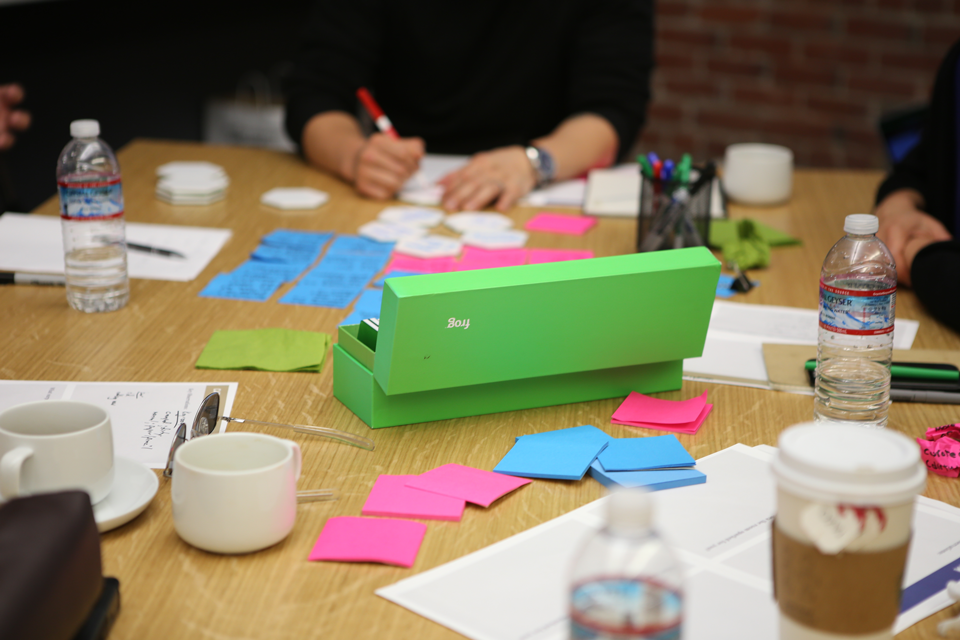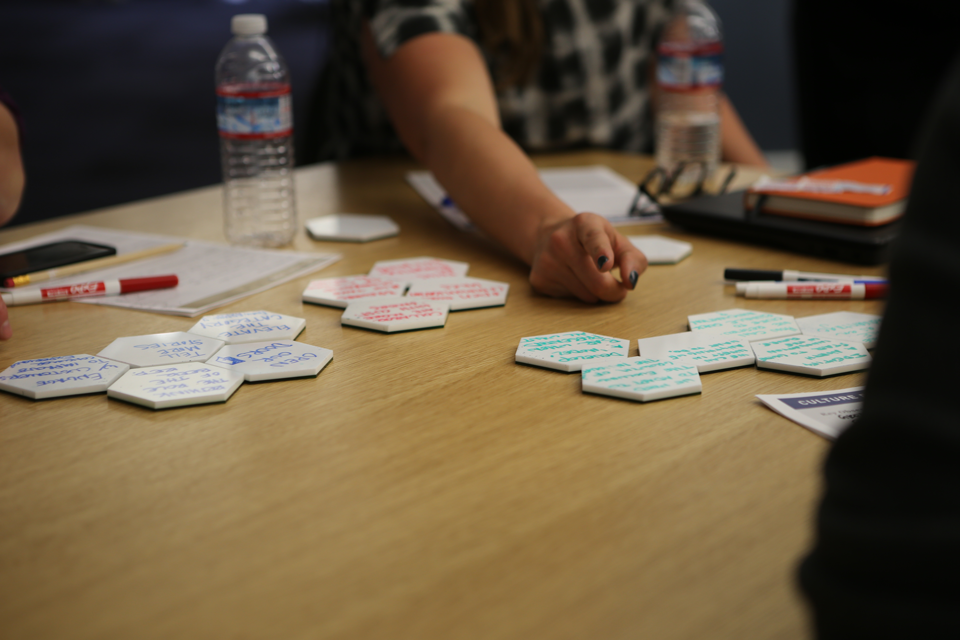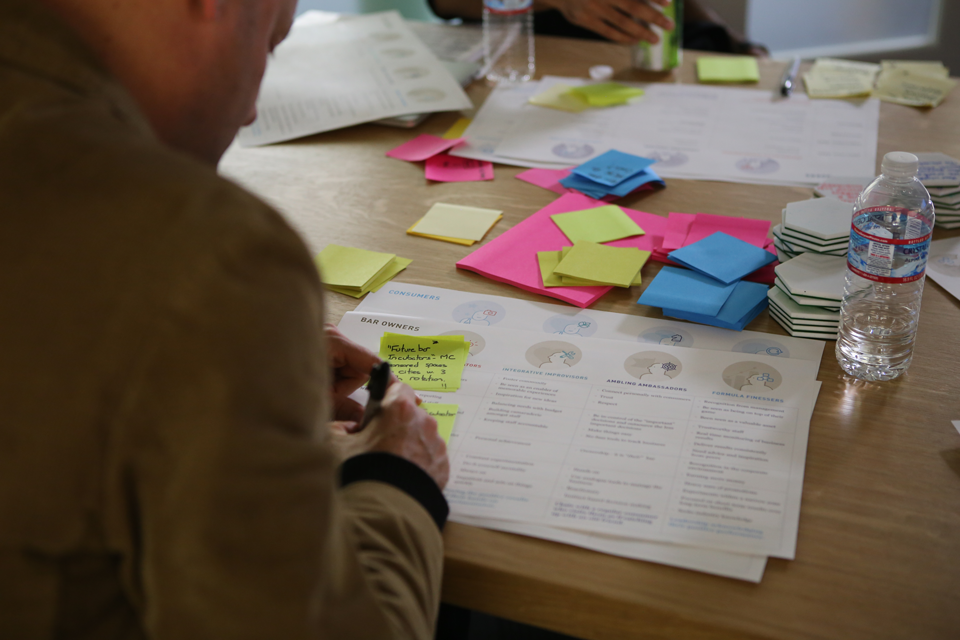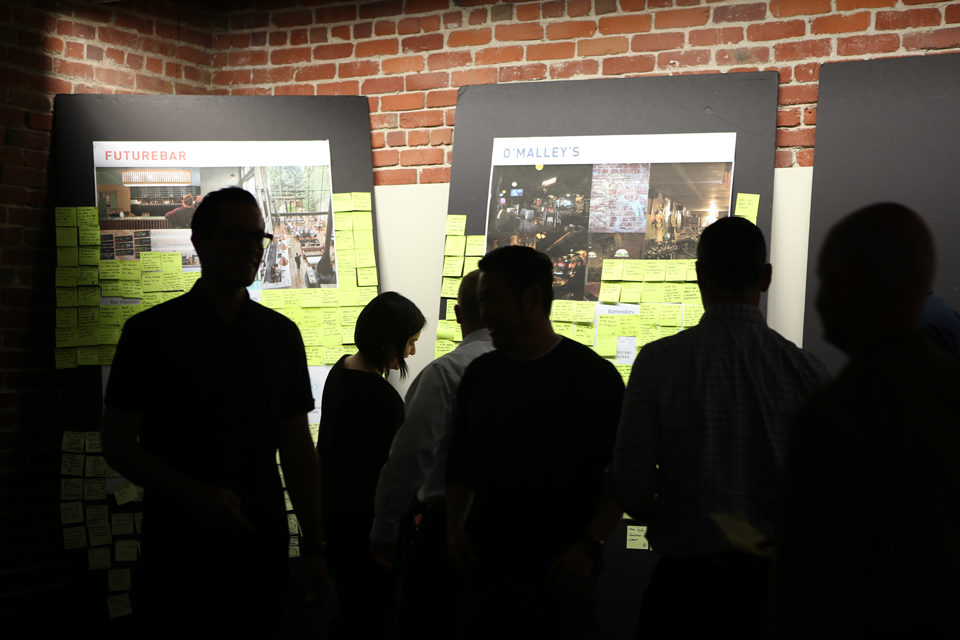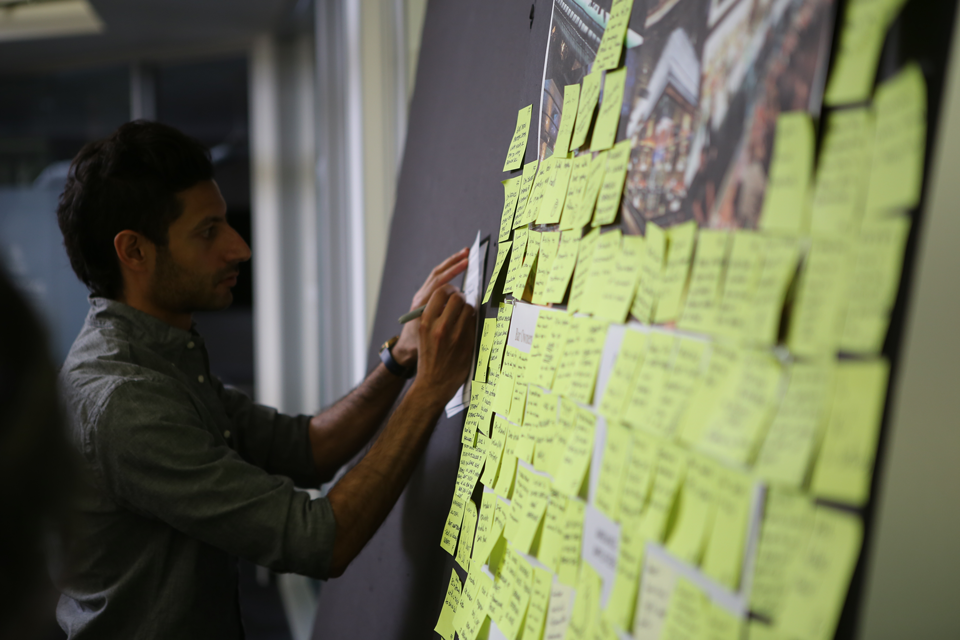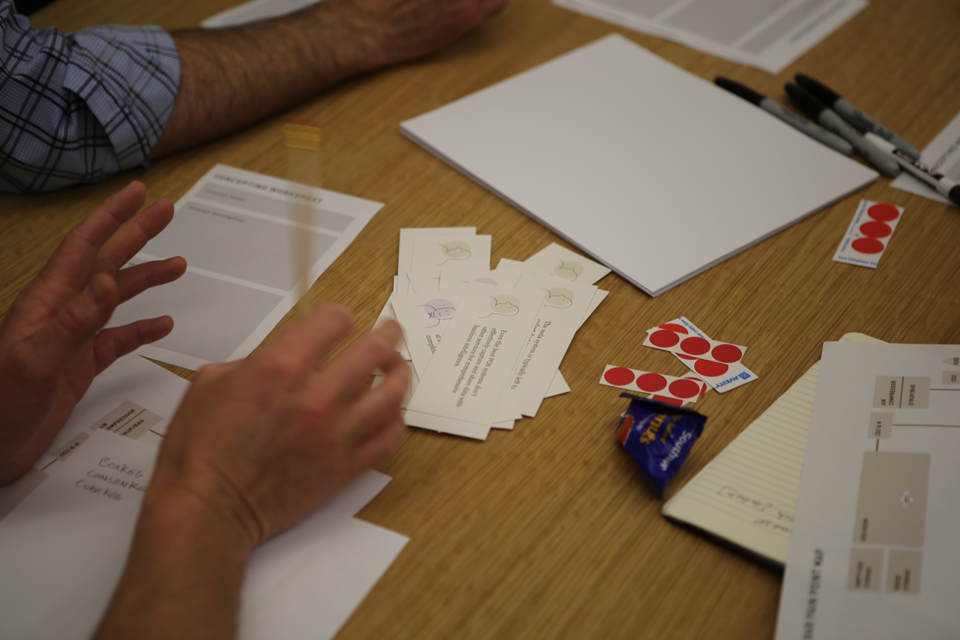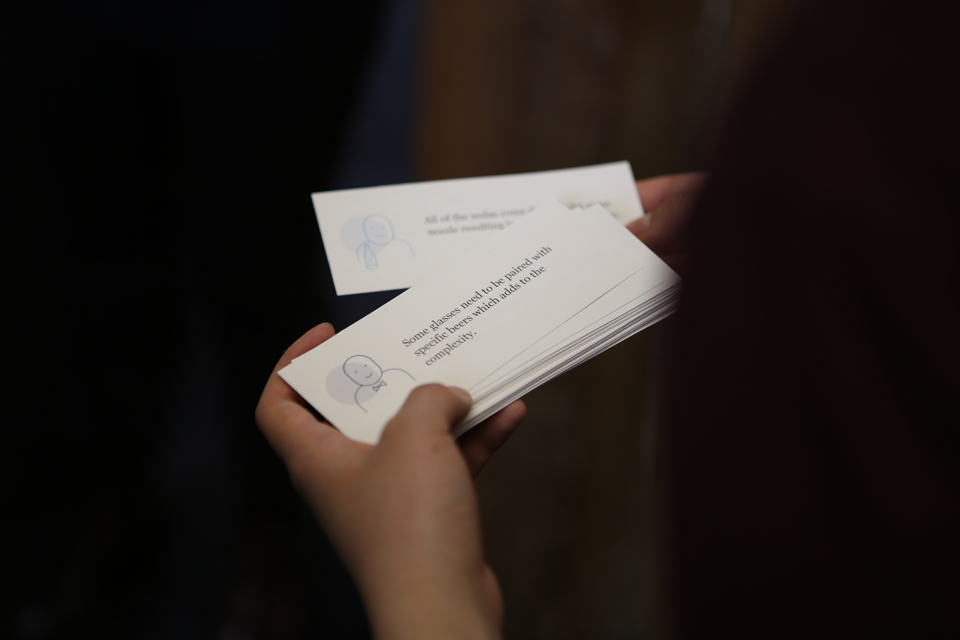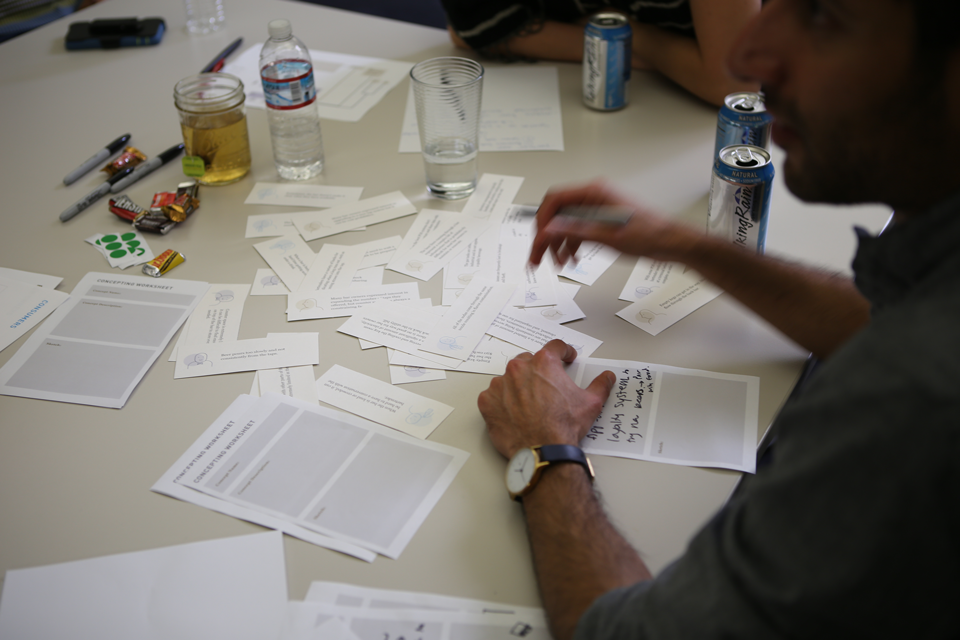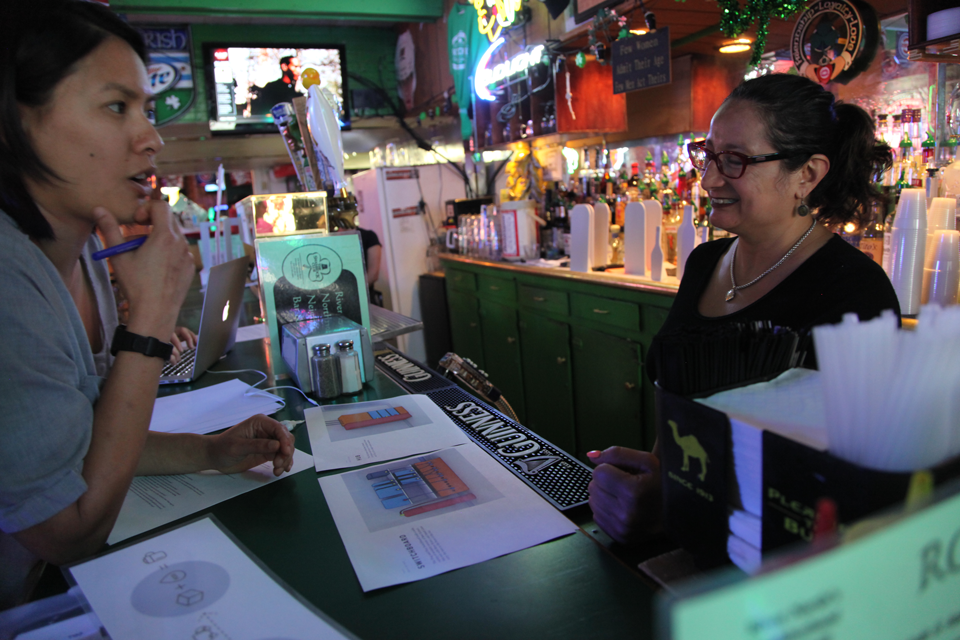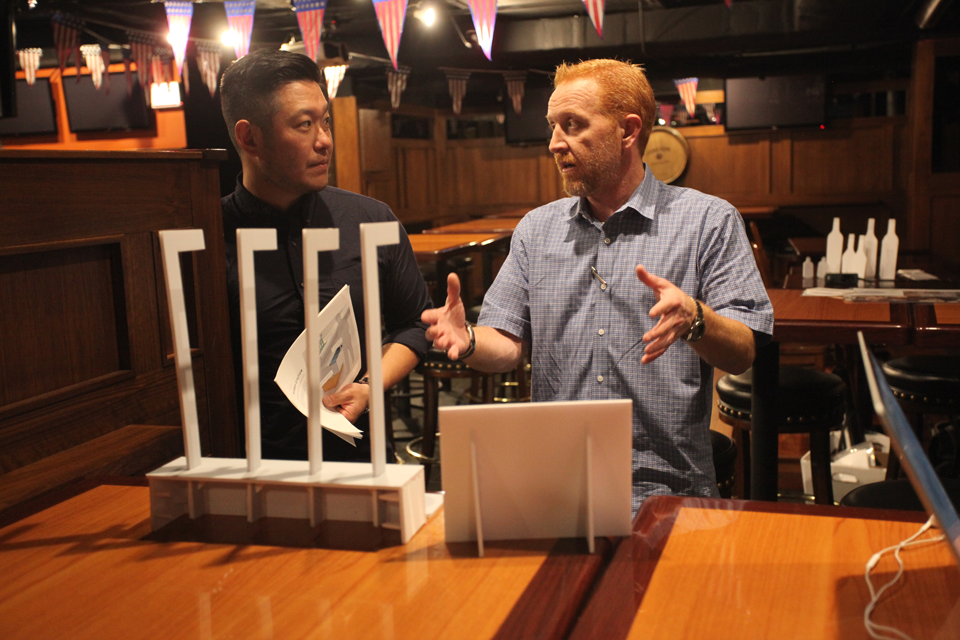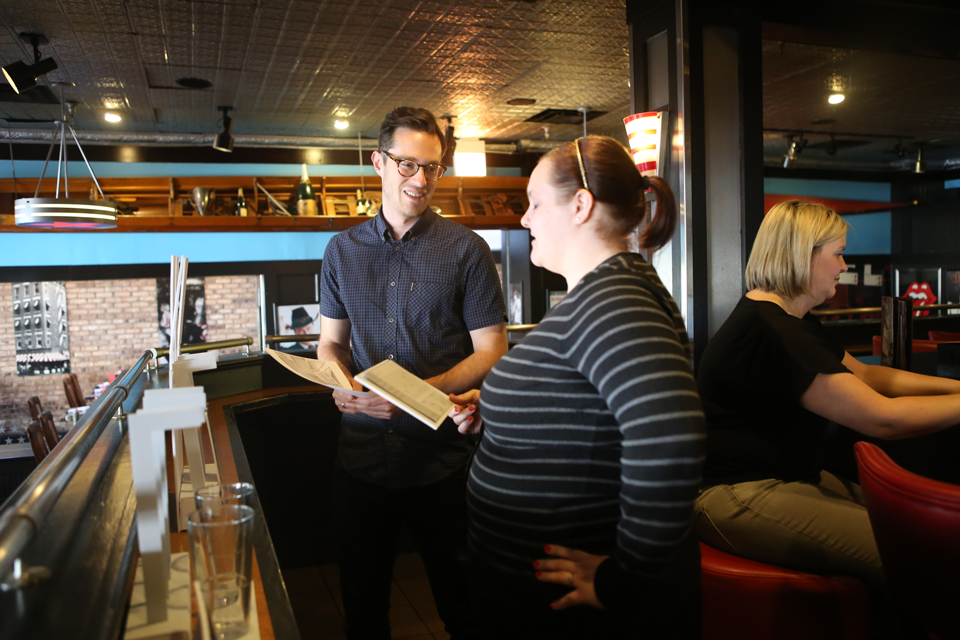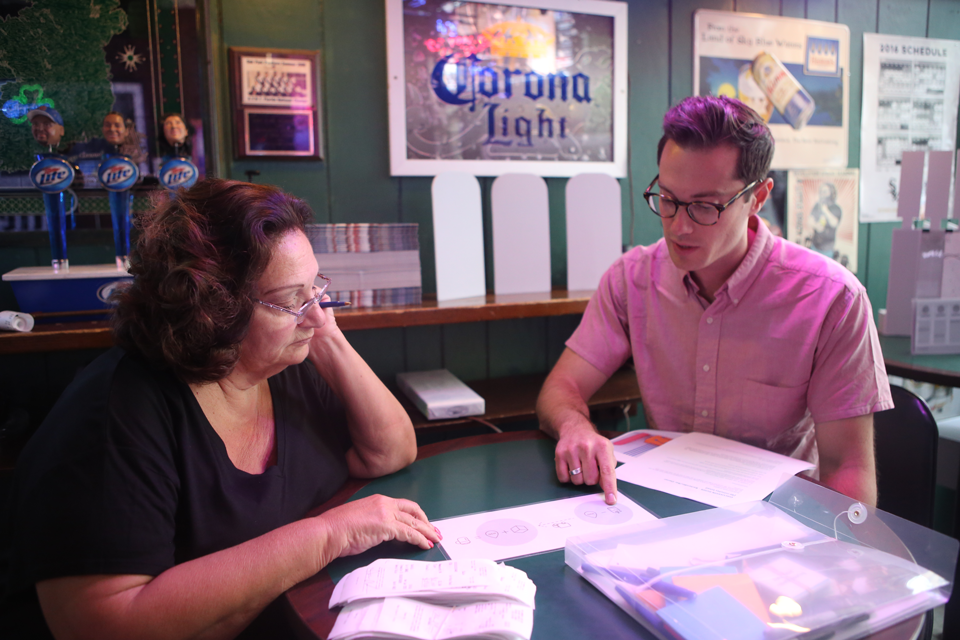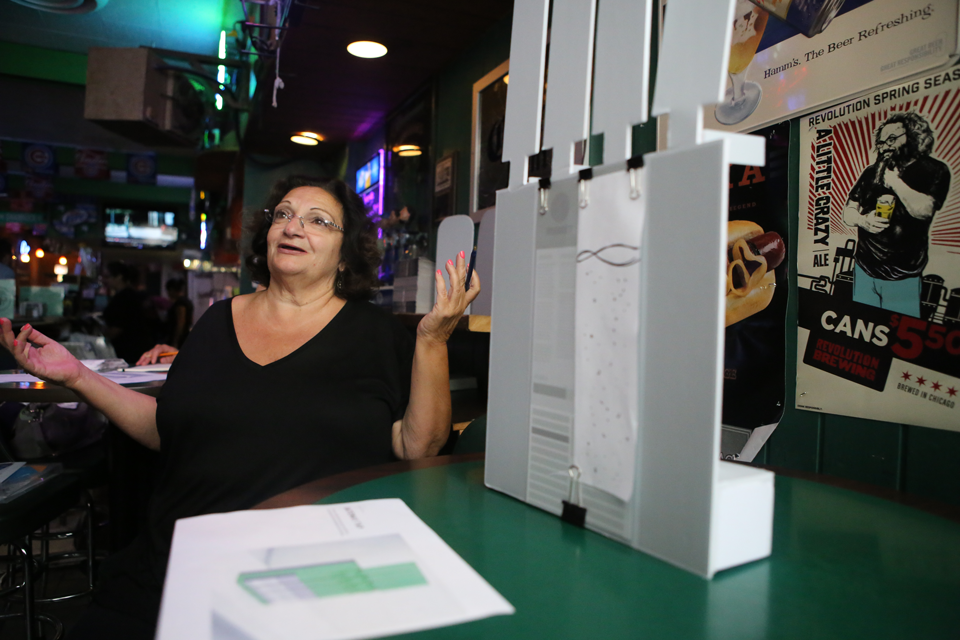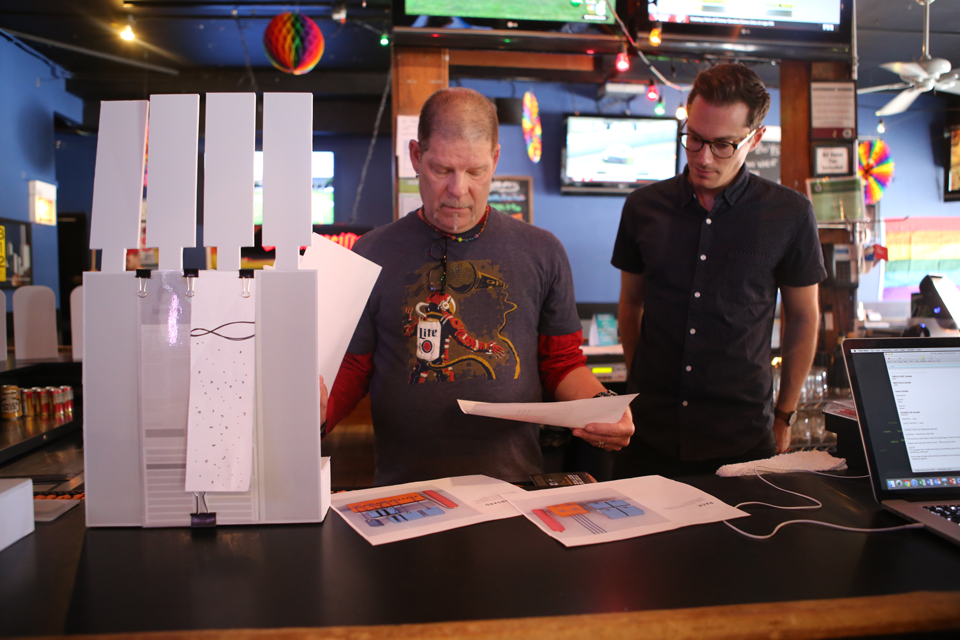Big Beer Experience Design
Big Beer Experience Design
Big Beer Experience Design
Ethnographic Research & Synthesis, Concept Development, Go-to-Market Strategy
Ethnographic Research & Synthesis, Concept Development, Go-to-Market Strategy
Ethnographic Research & Synthesis, Concept Development, Go-to-Market Strategy
Ethnographic Research & Synthesis, Concept Development, Go-to-Market Strategy
Tasked with helping to guide one of the biggest beer companies in the world on how to best leverage a game-changing technology, we put together a 6-month plan that involved ethnographic research in the homes of beer drinkers across America, and in bars of all sizes. After interviewing 12 consumers, 8 bartenders, and 9 bar owners, we synthesized our findings, developed product and experience concepts, crafted a go-to-market strategy, and wrapped it all up into an executive readout aimed at winning additional funding for future R&D, which it did successfully.
Tasked with helping to guide one of the biggest beer companies in the world on how to best leverage a game-changing technology, we put together a 6-month plan that involved ethnographic research in the homes of beer drinkers across America, and in bars of all sizes. After interviewing 12 consumers, 8 bartenders, and 9 bar owners, we synthesized our findings, developed product and experience concepts, crafted a go-to-market strategy, and wrapped it all up into an executive readout aimed at winning additional funding for future R&D, which it did successfully.
Tasked with helping to guide one of the biggest beer companies in the world on how to best leverage a game-changing technology, we put together a 6-month plan that involved ethnographic research in the homes of beer drinkers across America, and in bars of all sizes. After interviewing 12 consumers, 8 bartenders, and 9 bar owners, we synthesized our findings, developed product and experience concepts, crafted a go-to-market strategy, and wrapped it all up into an executive readout aimed at winning additional funding for future R&D, which it did successfully.
Tasked with helping to guide one of the biggest beer companies in the world on how to best leverage a game-changing technology, we put together a 6-month plan that involved ethnographic research in the homes of beer drinkers across America, and in bars of all sizes. After interviewing 12 consumers, 8 bartenders, and 9 bar owners, we synthesized our findings, developed product and experience concepts, crafted a go-to-market strategy, and wrapped it all up into an executive readout aimed at winning additional funding for future R&D, which it did successfully.
Tasked with helping to guide one of the biggest beer companies in the world on how to best leverage a game-changing technology, we put together a 6-month plan that involved ethnographic research in the homes of beer drinkers across America, and in bars of all sizes. After interviewing 12 consumers, 8 bartenders, and 9 bar owners, we synthesized our findings, developed product and experience concepts, crafted a go-to-market strategy, and wrapped it all up into an executive readout aimed at winning additional funding for future R&D, which it did successfully.
Year: 2015-16 Agency: frog Client: Big Beer Co. (Actual Client Top Secret)
Year: 2015-16 Agency: frog Client: Big Beer Co. (Actual Client Top Secret)
Year: 2015-16 Agency: frog Client: Big Beer Co.
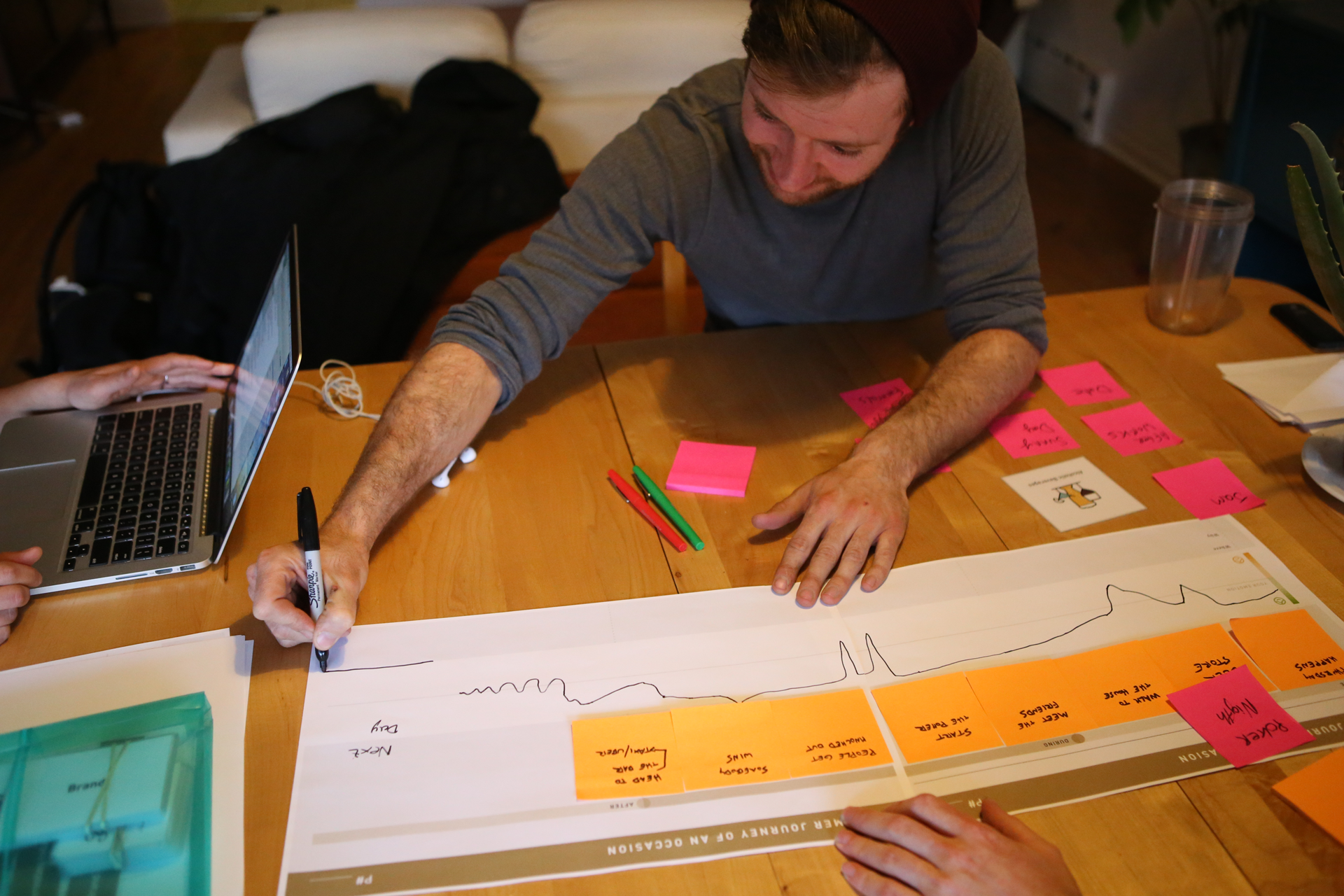
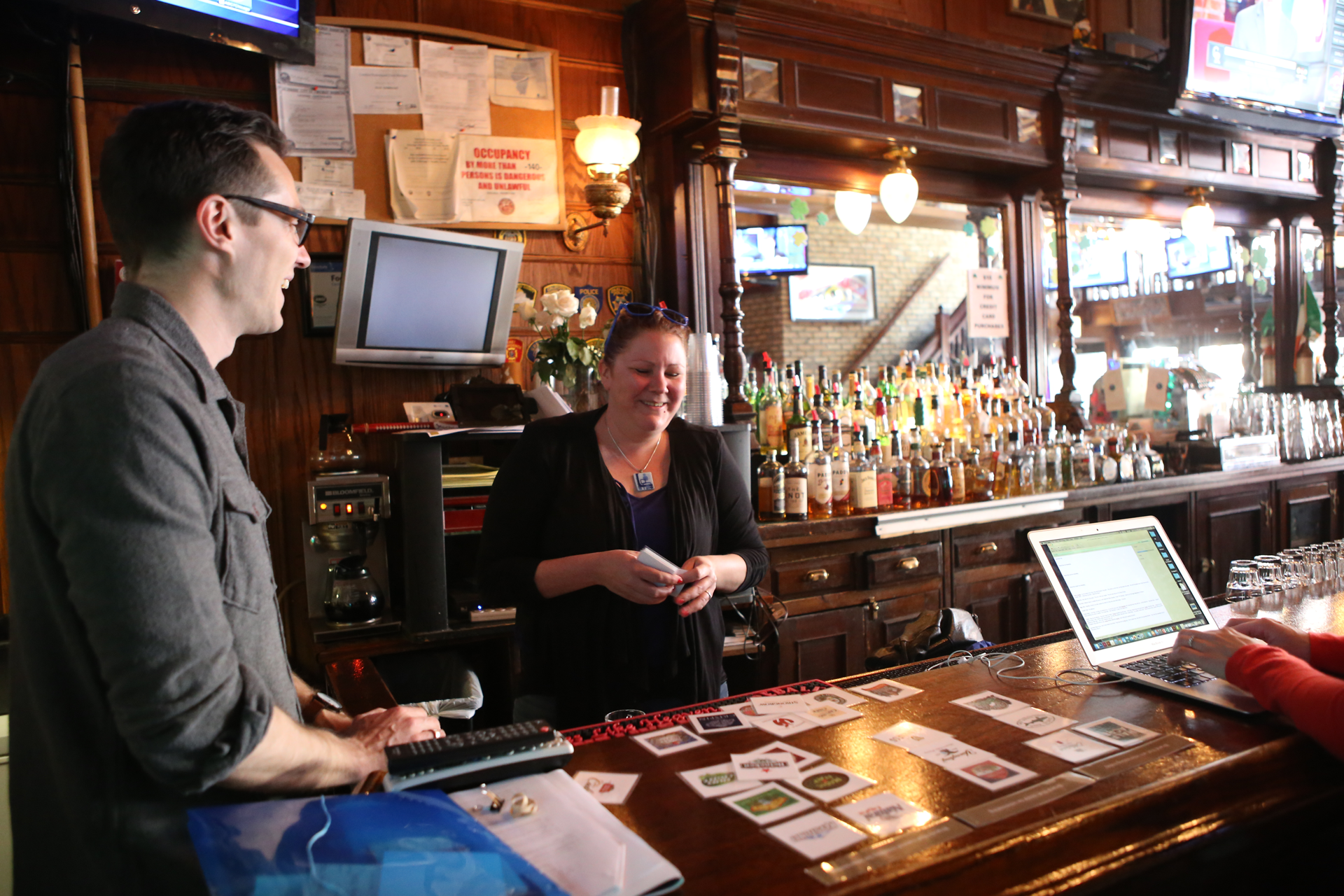
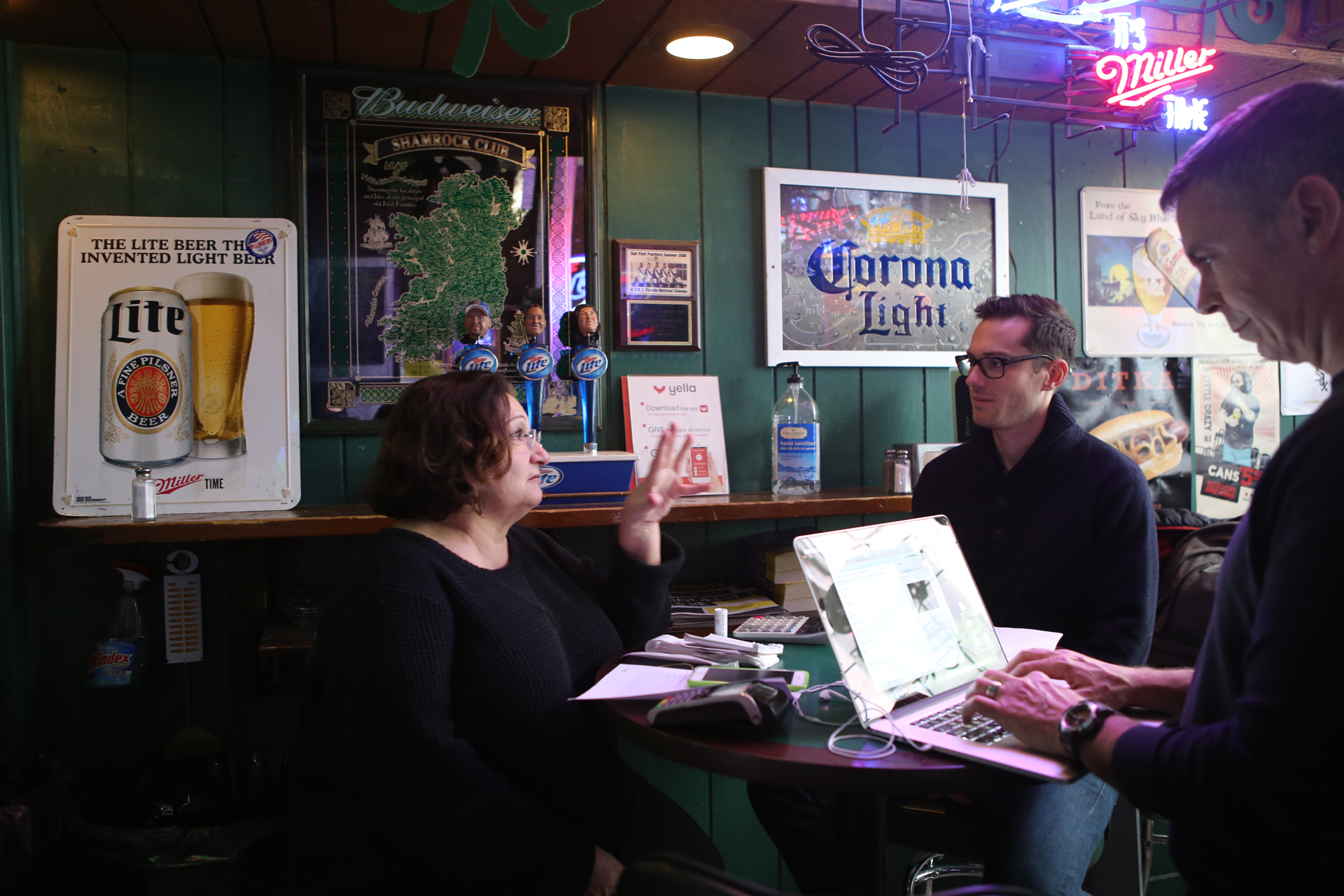
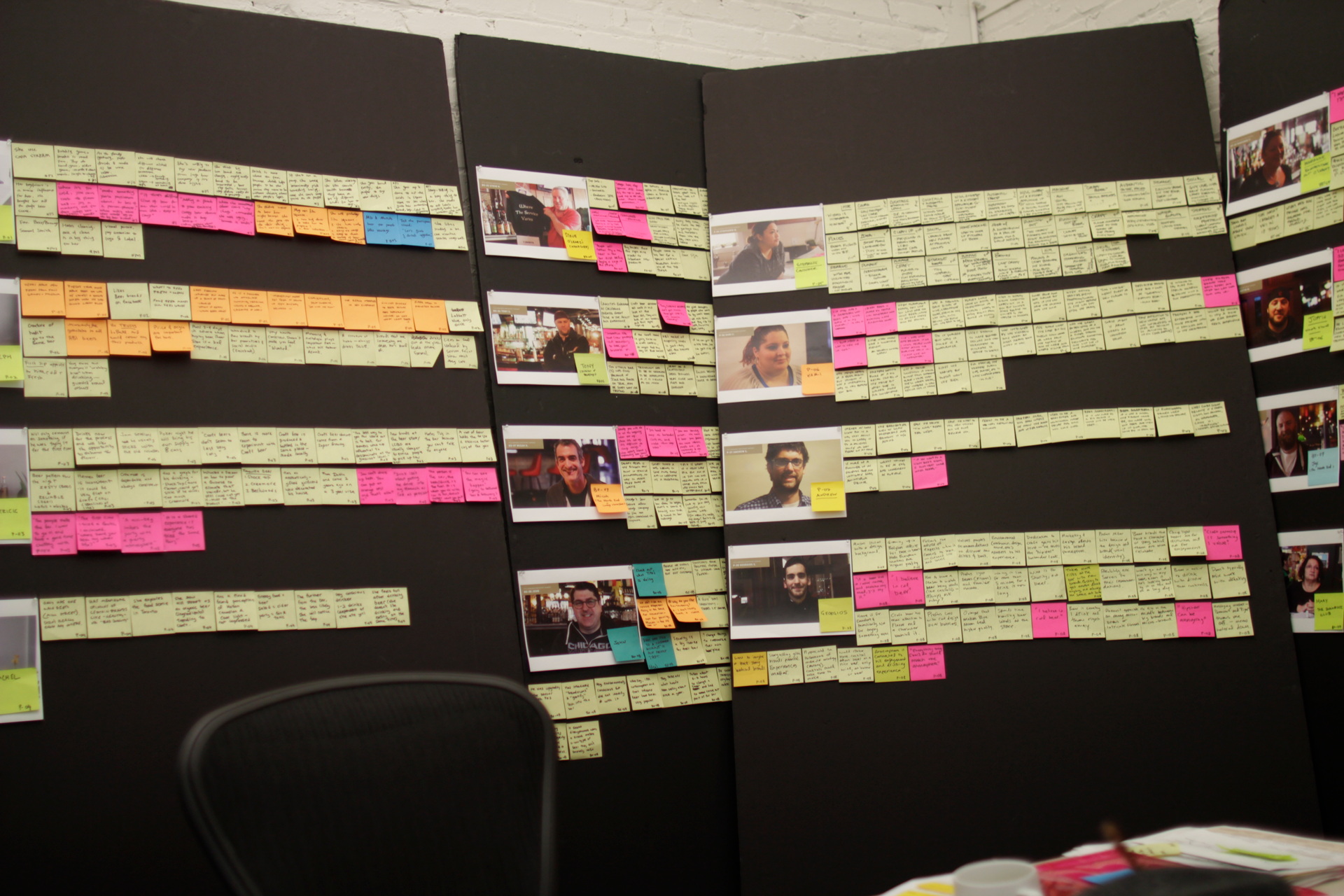
Immersion & Research
Since the new technology has the potential to radically transform both the experience of beer drinkers at home and at bars, as well as the experience of bartenders and bar owners, we hit the road and met with our potential users. We conducted ethnographic interviews to understand explicit and latent needs, as well as to understand the environmental context in which our experience concepts would be embedded. We utilized a variety of research tools and activities to encourage our interviewees to share their pain points with the current beer drinking/serving/managing experience.
Since the new technology has the potential to radically transform both the experience of beer drinkers at home and at bars, as well as the experience of bartenders and bar owners, we hit the road and met with our potential users. We conducted ethnographic interviews to understand explicit and latent needs, as well as to understand the environmental context in which our experience concepts would be embedded. We utilized a variety of research tools and activities to encourage our interviewees to share their pain points with the current beer drinking/serving/managing experience.
Since the new technology has the potential to radically transform both the experience of beer drinkers at home and at bars, as well as the experience of bartenders and bar owners, we hit the road and met with our potential users. We conducted ethnographic interviews to understand explicit and latent needs, as well as to understand the environmental context in which our experience concepts would be embedded. We utilized a variety of research tools and activities to encourage our interviewees to share their pain points with the current beer drinking/serving/managing experience.
Since the new technology has the potential to radically transform both the experience of beer drinkers at home and at bars, as well as the experience of bartenders and bar owners, we hit the road and met with our potential users. We conducted ethnographic interviews to understand explicit and latent needs, as well as to understand the environmental context in which our experience concepts would be embedded. We utilized a variety of research tools and activities to encourage our interviewees to share their pain points with the current beer drinking/serving/managing experience.
Upon returning to the frog studio after weeks of travel and in-field synthesis, we took a deep dive into the data and mined it for patterns and insights. We extracted opportunity areas and identified behavioral archetypes that described patterns shared among many different people. These patterns highlighted unique behavior sets, motivations, and functional and emotional needs which helped us focus and prioritize our design efforts. We then collated all of the synthesized findings and planned a two-day workshop to immerse our client in the output of the research and to co-generate experience concepts with them.
Upon returning to the frog studio after weeks of travel and in-field synthesis, we took a deep dive into the data and mined it for patterns and insights. We extracted opportunity areas and identified behavioral archetypes that described patterns shared among many different people. These patterns highlighted unique behavior sets, motivations, and functional and emotional needs which helped us focus and prioritize our design efforts. We then collated all of the synthesized findings and planned a two-day workshop to immerse our client in the output of the research and to co-generate experience concepts with them.
Upon returning to the frog studio after weeks of travel and in-field synthesis, we took a deep dive into the data and mined it for patterns and insights. We extracted opportunity areas and identified behavioral archetypes that described patterns shared among many different people. These patterns highlighted unique behavior sets, motivations, and functional and emotional needs which helped us focus and prioritize our design efforts. We then collated all of the synthesized findings and planned a two-day workshop to immerse our client in the output of the research and to co-generate experience concepts with them.
Upon returning to the frog studio after weeks of travel and in-field synthesis, we took a deep dive into the data and mined it for patterns and insights. We extracted opportunity areas and identified behavioral archetypes that described patterns shared among many different people. These patterns highlighted unique behavior sets, motivations, and functional and emotional needs which helped us focus and prioritize our design efforts. We then collated all of the synthesized findings and planned a two-day workshop to immerse our client in the output of the research and to co-generate experience concepts with them.
Research Readout & Client Co-Creation
Armed with a rich set of actionable and inspiring insights and opportunity areas generated from the research synthesis, we hosted client executives in our office for a two-day workshop. We immersed them in our research via Immersion Rooms staged with photos and quotes from our field interviews as well as secondary research material looking at trends in the category and in culture at large. We walked them through the behavioral archetypes we had identified for beer drinkers, bartenders, and bar owners and invited the client to brainstorm experience concepts that would satisfy the functional and emotional needs of each archetypal future customer. Understanding the linchpin moments where emotional connections are made across customers and consumers enabled the team to generate hundreds of concepts.
Armed with a rich set of actionable and inspiring insights and opportunity areas generated from the research synthesis, we hosted client executives in our office for a two-day workshop. We immersed them in our research via Immersion Rooms staged with photos and quotes from our field interviews as well as secondary research material looking at trends in the category and in culture at large. We walked them through the behavioral archetypes we had identified for beer drinkers, bartenders, and bar owners and invited the client to brainstorm experience concepts that would satisfy the functional and emotional needs of each archetypal future customer. Understanding the linchpin moments where emotional connections are made across customers and consumers enabled the team to generate hundreds of concepts.
Armed with a rich set of actionable and inspiring insights and opportunity areas generated from the research synthesis, we hosted client executives in our office for a two-day workshop. We immersed them in our research via Immersion Rooms staged with photos and quotes from our field interviews as well as secondary research material looking at trends in the category and in culture at large. We walked them through the behavioral archetypes we had identified for beer drinkers, bartenders, and bar owners and invited the client to brainstorm experience concepts that would satisfy the functional and emotional needs of each archetypal future customer. Understanding the linchpin moments where emotional connections are made across customers and consumers enabled the team to generate hundreds of concepts.
Armed with a rich set of actionable and inspiring insights and opportunity areas generated from the research synthesis, we hosted client executives in our office for a two-day workshop. We immersed them in our research via Immersion Rooms staged with photos and quotes from our field interviews as well as secondary research material looking at trends in the category and in culture at large. We walked them through the behavioral archetypes we had identified for beer drinkers, bartenders, and bar owners and invited the client to brainstorm experience concepts that would satisfy the functional and emotional needs of each archetypal future customer. Understanding the linchpin moments where emotional connections are made across customers and consumers enabled the team to generate hundreds of concepts.
We kicked off day two with an interactive workshop activity to collaborate on go-to-market strategies for the new technology. Recognizing that our client had developed a new technology with massive potential, we also knew that great technology alone does not inherently yield market success. We therefore explored business opportunities that harnessed not only the new technology but also experience design and brand loyalty. Switching gears for the final part of the epic two days, we lead the client through a prototyping and experience design exercise that included concept downselection, rapid prototyping, and some truly hilarious skits that brought the future experience concepts to life.
We kicked off day two with an interactive workshop activity to collaborate on go-to-market strategies for the new technology. Recognizing that our client had developed a new technology with massive potential, we also knew that great technology alone does not inherently yield market success. We therefore explored business opportunities that harnessed not only the new technology but also experience design and brand loyalty. Switching gears for the final part of the epic two days, we lead the client through a prototyping and experience design exercise that included concept downselection, rapid prototyping, and some truly hilarious skits that brought the future experience concepts to life.
We kicked off day two with an interactive workshop activity to collaborate on go-to-market strategies for the new technology. Recognizing that our client had developed a new technology with massive potential, we also knew that great technology alone does not inherently yield market success. We therefore explored business opportunities that harnessed not only the new technology but also experience design and brand loyalty. Switching gears for the final part of the epic two days, we lead the client through a prototyping and experience design exercise that included concept downselection, rapid prototyping, and some truly hilarious skits that brought the future experience concepts to life.
We kicked off day two with an interactive workshop activity to collaborate on go-to-market strategies for the new technology. Recognizing that our client had developed a new technology with massive potential, we also knew that great technology alone does not inherently yield market success. We therefore explored business opportunities that harnessed not only the new technology but also experience design and brand loyalty. Switching gears for the final part of the epic two days, we lead the client through a prototyping and experience design exercise that included concept downselection, rapid prototyping, and some truly hilarious skits that brought the future experience concepts to life.
Participatory Design Research
After several weeks of concept generation, refinement, visualization, and prototyping, we brought a set of our best concepts back into the field, to re-visit many of the same bartenders and bar owners and a new set of beer drinkers in order to validate and further refine the concepts. Our participatory design research sessions took place in the bars and homes where the experience concepts would take place and we invited our participants to act out the experience with us. Through this process of engaging bartenders, owners, and consumers in the iteration and development of concepts, it helped ensure the concepts would have value and fit into the environments and behaviors for which they were designed.
After several weeks of concept generation, refinement, visualization, and prototyping, we brought a set of our best concepts back into the field, to re-visit many of the same bartenders and bar owners and a new set of beer drinkers in order to validate and further refine the concepts. Our participatory design research sessions took place in the bars and homes where the experience concepts would take place and we invited our participants to act out the experience with us. Through this process of engaging bartenders, owners, and consumers in the iteration and development of concepts, it helped ensure the concepts would have value and fit into the environments and behaviors for which they were designed.
After several weeks of concept generation, refinement, visualization, and prototyping, we brought a set of our best concepts back into the field, to re-visit many of the same bartenders and bar owners and a new set of beer drinkers in order to validate and further refine the concepts. Our participatory design research sessions took place in the bars and homes where the experience concepts would take place and we invited our participants to act out the experience with us. Through this process of engaging bartenders, owners, and consumers in the iteration and development of concepts, it helped ensure the concepts would have value and fit into the environments and behaviors for which they were designed.
For bartenders and owners, we sought to understand how the concepts might integrate into their unique physical and service ecosystem, determine if the concept solves or addresses any of their pain points, understand the value propositions that will appeal to them, and refine the concepts with them, working to build successful emotional linchpin moments. For consumers, we sought to understand how the concepts might impact their beer drinking experience, determine if the concepts would change the relationship between the consumer and the bartender, understand the value propositions that will appeal to them, and explore brand positioning and origin story opportunities.
For bartenders and owners, we sought to understand how the concepts might integrate into their unique physical and service ecosystem, determine if the concept solves or addresses any of their pain points, understand the value propositions that will appeal to them, and refine the concepts with them, working to build successful emotional linchpin moments. For consumers, we sought to understand how the concepts might impact their beer drinking experience, determine if the concepts would change the relationship between the consumer and the bartender, understand the value propositions that will appeal to them, and explore brand positioning and origin story opportunities.
For bartenders and owners, we sought to understand how the concepts might integrate into their unique physical and service ecosystem, determine if the concept solves or addresses any of their pain points, understand the value propositions that will appeal to them, and refine the concepts with them, working to build successful emotional linchpin moments. For consumers, we sought to understand how the concepts might impact their beer drinking experience, determine if the concepts would change the relationship between the consumer and the bartender, understand the value propositions that will appeal to them, and explore brand positioning and origin story opportunities.
While much of this project is too confidential to share, what I can say is that my team and I went on to generate a set of experience concepts for futuristic beer experiences that leveraged the new technology and consisted of hardware, software, services, and beverages. The success of our final presentation to the project steering committee is evidenced by the project's continued executive investment and product development work, in which frog remains a key partner.
While much of this project is too confidential to share, what I can say is that my team and I went on to generate a set of experience concepts for futuristic beer experiences that leveraged the new technology and consisted of hardware, software, services, and beverages. The success of our final presentation to the project steering committee is evidenced by the project's continued executive investment and product development work, in which frog remains a key partner.
While much of this project is too confidential to share, what I can say is that my team and I went on to generate a set of experience concepts for futuristic beer experiences that leveraged the new technology and consisted of hardware, software, services, and beverages. The success of our final presentation to the project steering committee is evidenced by the project's continued executive investment and product development work, in which frog remains a key partner.
TEAM
Myself: Lead Interaction Designer / Researcher
Max Beck: Project Manager
James Song: Creative Director
Kristin Krajecki: Brand Strategy Director
Venetia Tay: Principal Strategist
Lifei Yu: Visual Designer
Jonathan Grossman: Industrial Designer
TEAM
Myself: Lead Interaction Designer / Researcher
Max Beck: Project Manager
James Song: Creative Director
Kristin Krajecki: Brand Strategy Director
Venetia Tay: Principal Strategist
Lifei Yu: Visual Designer
Jonathan Grossman: Industrial Designer
TEAM
Myself: Lead Interaction Designer / Researcher
Max Beck: Project Manager
James Song: Creative Director
Kristin Krajecki: Brand Strategy Director
Venetia Tay: Principal Strategist
Lifei Yu: Visual Designer
Jonathan Grossman: Industrial Designer
TEAM
Myself: Lead Interaction Designer / Researcher
Max Beck: Project Manager
James Song: Creative Director
Kristin Krajecki: Brand Strategy Director
Venetia Tay: Principal Strategist
Lifei Yu: Visual Designer
Jonathan Grossman: Industrial Designer
TEAM
Myself: Lead Interaction Designer / Researcher
Max Beck: Project Manager
James Song: Creative Director
Kristin Krajecki: Brand Strategy Director
Venetia Tay: Principal Strategist
Lifei Yu: Visual Designer
Jonathan Grossman: Industrial Designer
More Projects

Healthcare UX StrategyUX Strategy, User Research, Concept Development
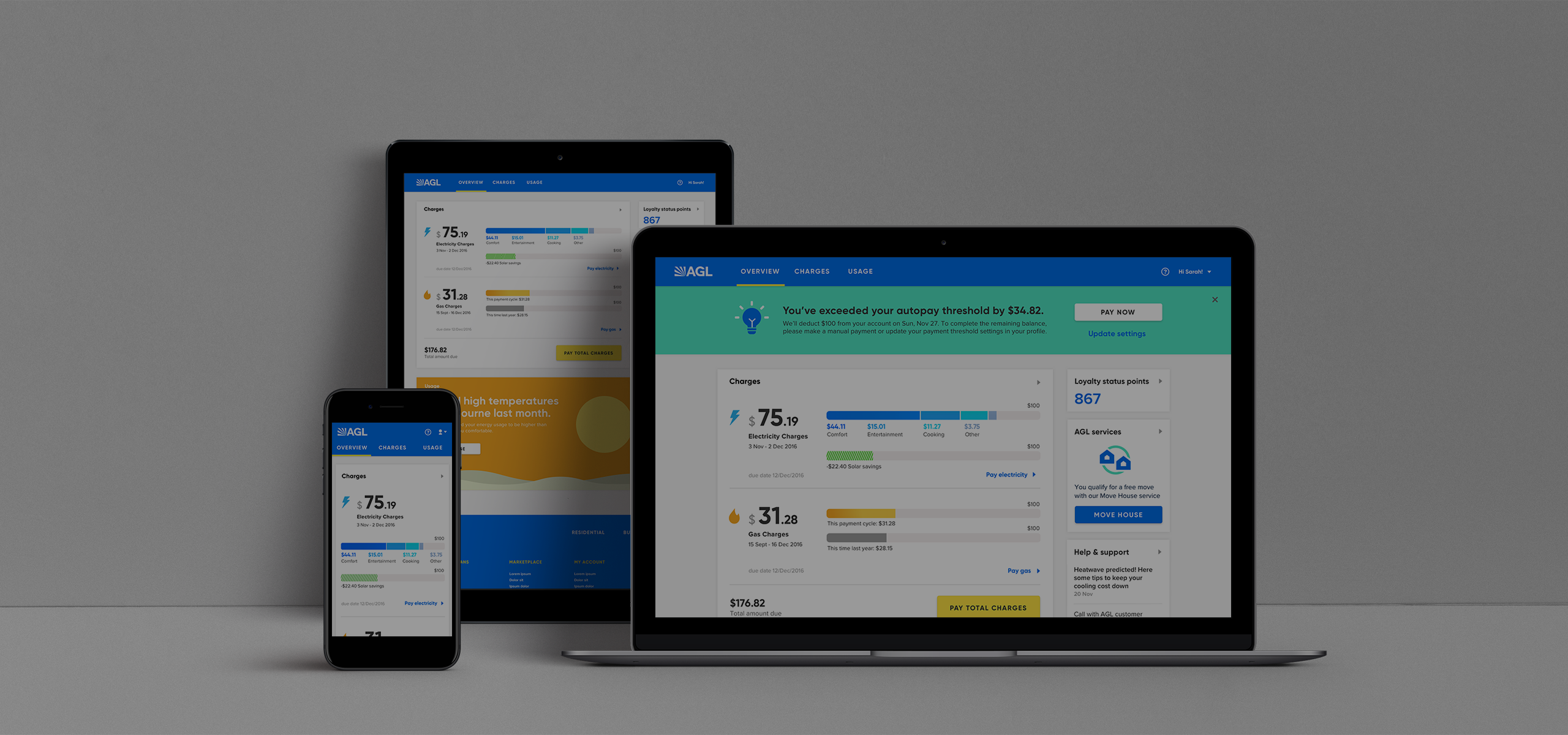
AGL Digital TransformationResponsive Website, Design Language System, Strategic Roadmap
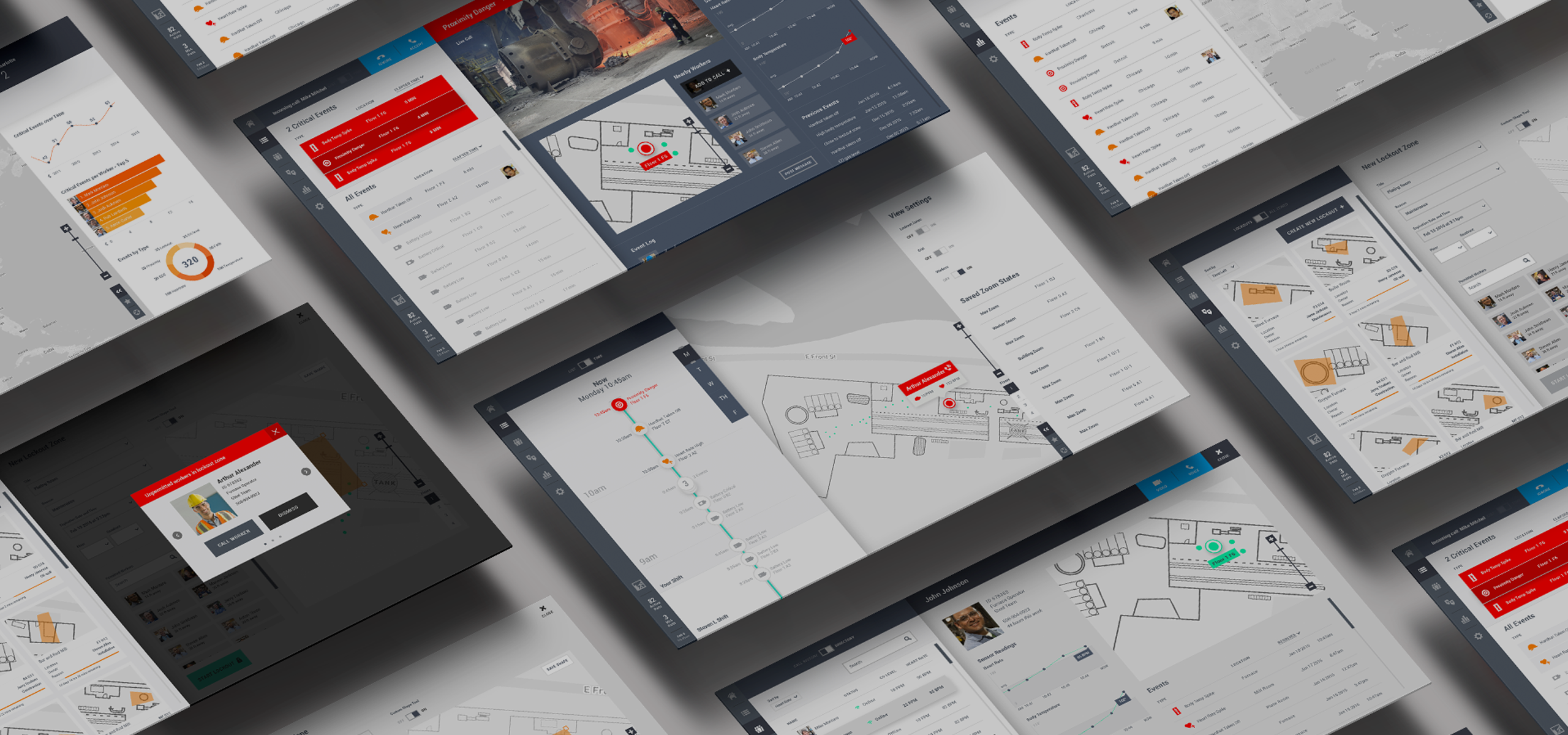
Guardhat Safety EcosystemDigital Experience Design
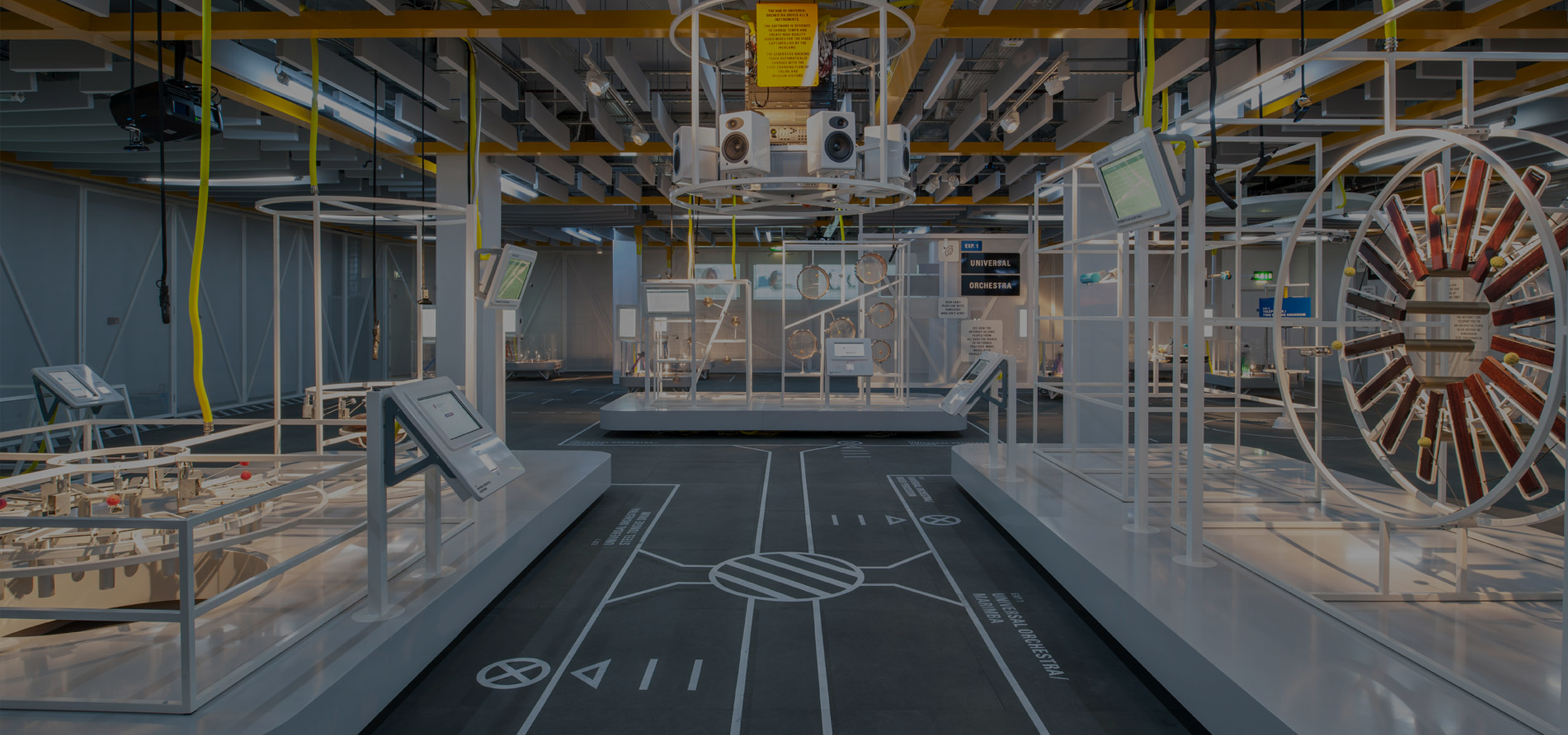
Google Web LabInteractive Museum Exhibit, Web Experience
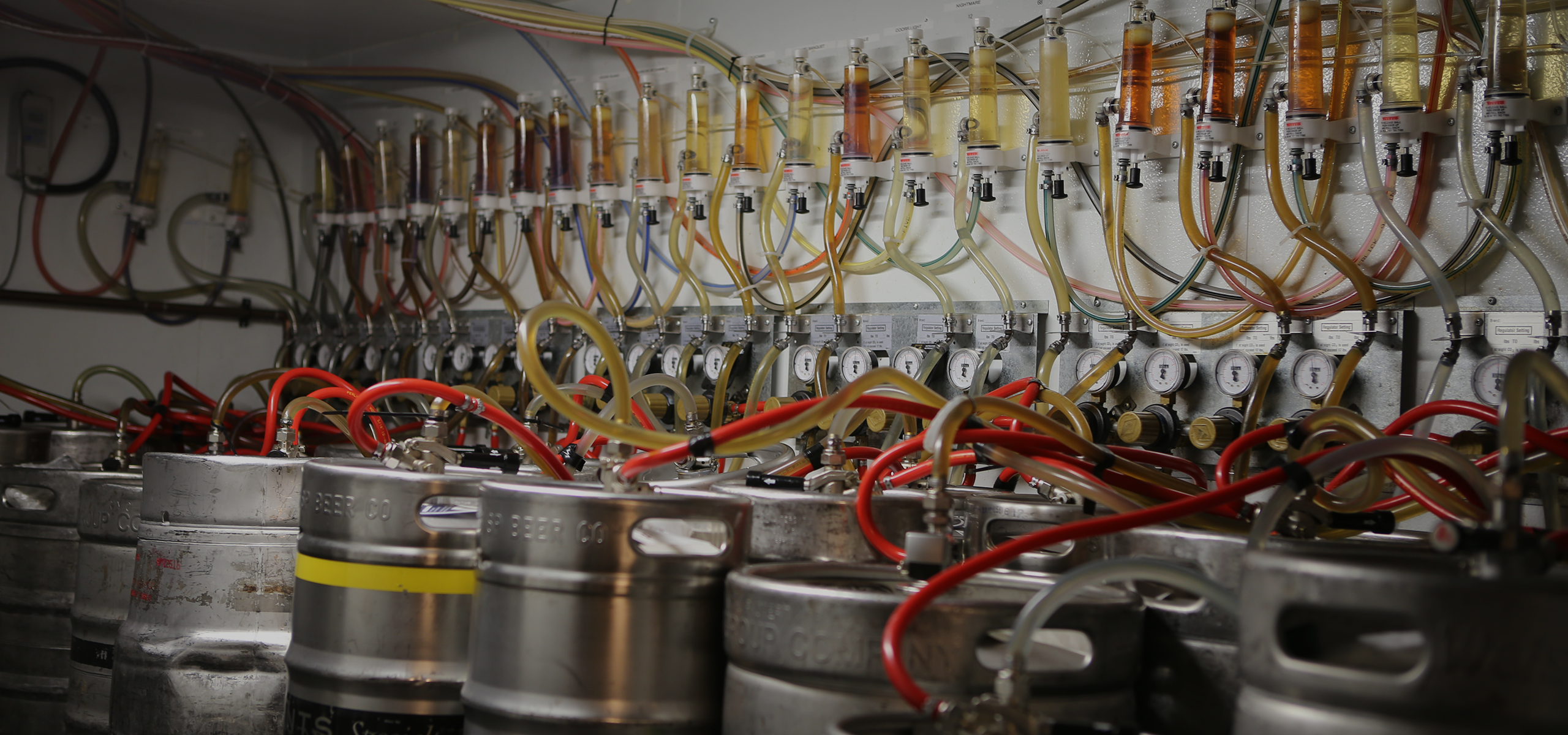
Big Beer Experience DesignEthnographic Research & Synthesis, Concept Development, Go-to-Market Strategy
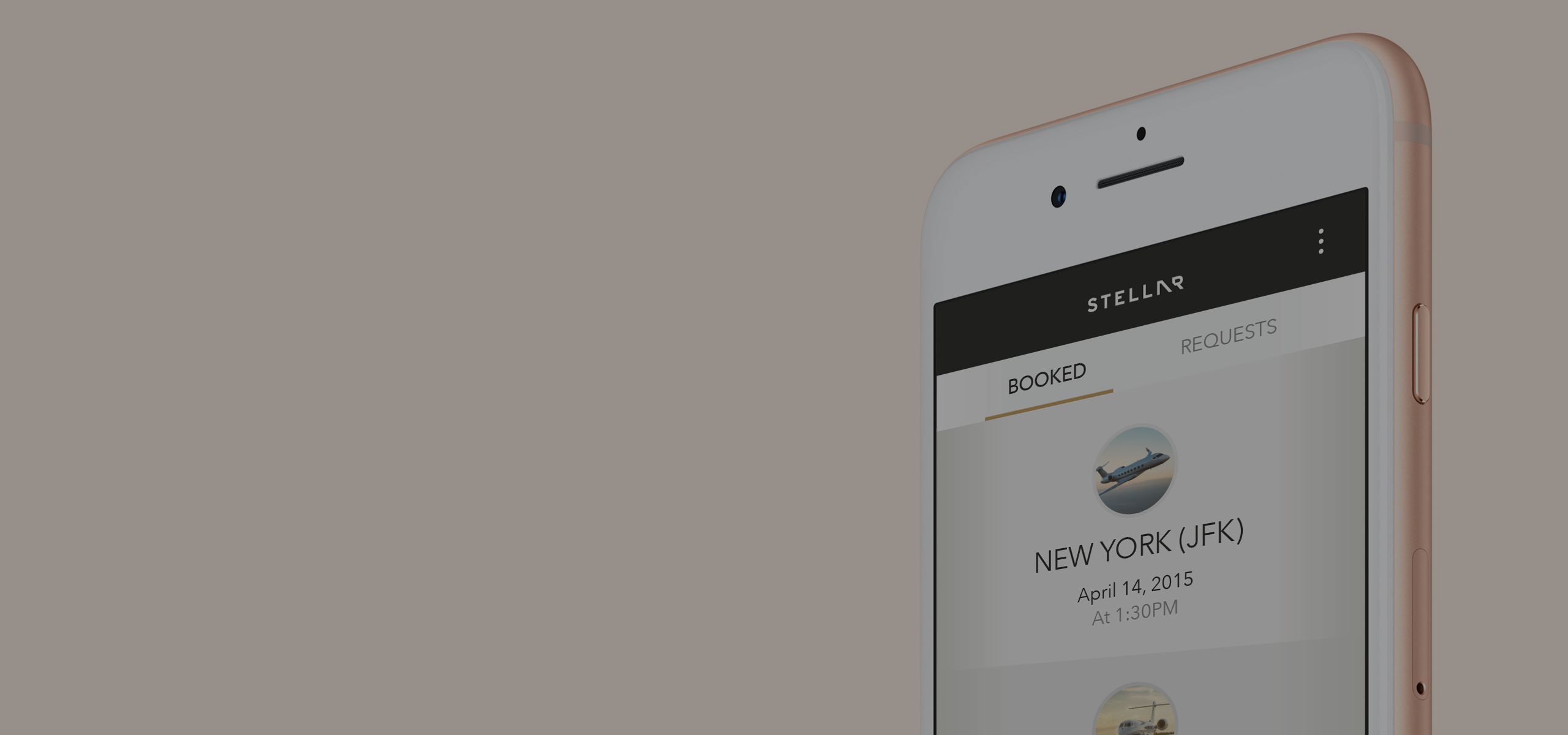
StellarMobile App, Enterprise Desktop App, Customer Website

The Great MapPhysical / Digital Museum Experience
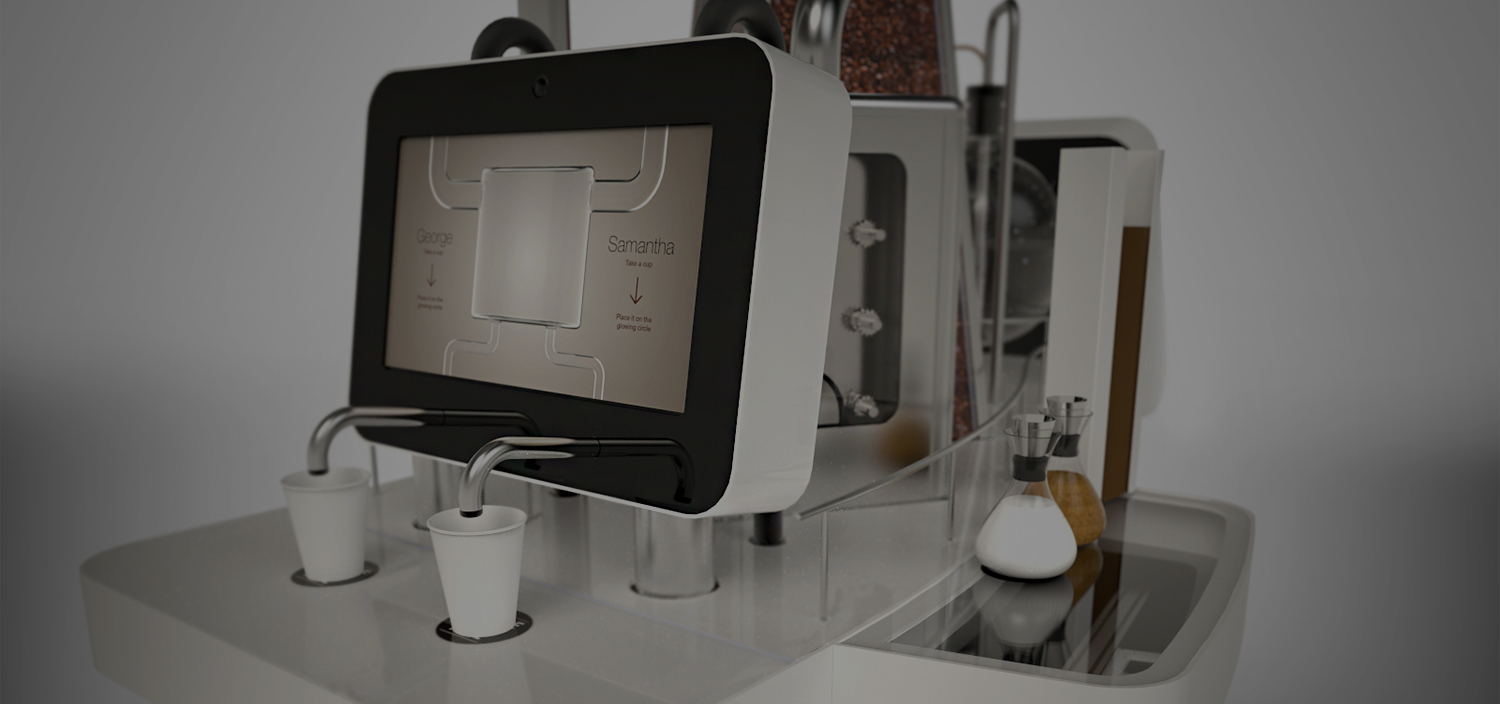
The Coffee ConnectorInteractive Physical / Digital Installation
